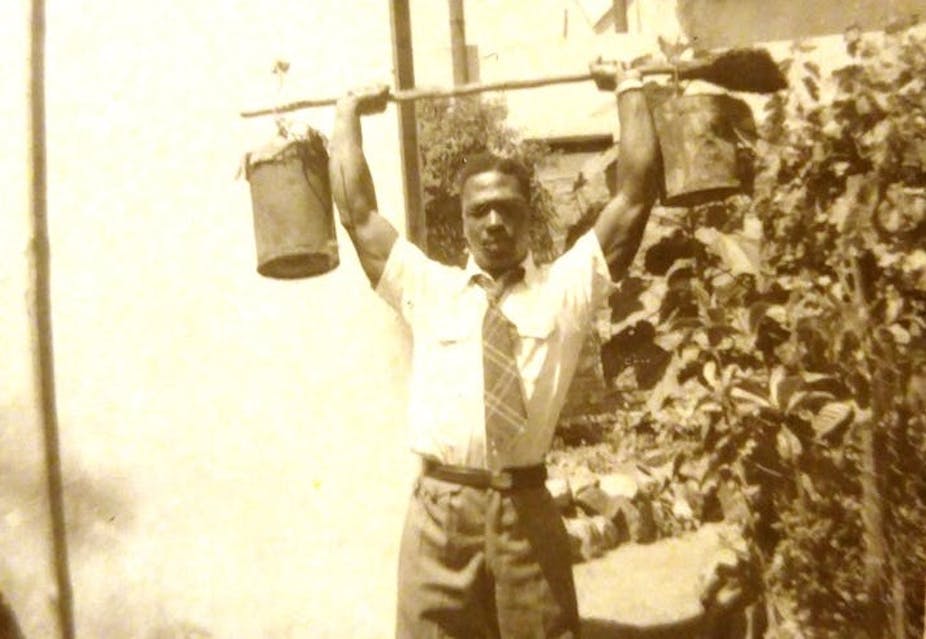Since the 1990s, studies of sport have tended to focus on science, at the expense of physical culture studies. The once thriving field of physical culture studies – how people shape their bodies culturally – has also had a bias. It has tended to focus on body strengthening, healthy living and beautifying (or neglect), all from a Eurocentric perspective.
The result is that ordinary people uncritically accept modern marketing of what it is to be healthy – fad diets, expensive gyms, branded sportswear and more.
There is more to sport, though, than a performance element. Sport is also about community and identity – and is shaped by culture, politics and resistance.
The essays collected in a new book I edited, Critical Reflections on Physical Culture at the Edges of Empire, are an effort to recognise what has been excluded from the picture. They seek to understand the impact that colonial history has had on physical culture’s past and present. In particular, they show the links between physical culture and the portrayal of racial and cultural identities as “others”. Hopefully, this book can contribute to a growing consciousness about the value of sport participation beyond high performance and Olympic medals.
Politics of the body
The book’s contributors consider sport and the human body in a social context, exploring how they contribute to systems of power.
Historically, the term physical culture is associated with displays of strength, health and fitness. It came to include sport movements such as rugby, cricket, netball, hockey, organised mountaineering and others. These diffused from Europe to Africa and other regions in the late 1800s and early 1900s.
This diffusion formed part of the European colonisation process. The introductory chapter of our book calls it “an exercise of mimicry … where the colonised adopts the coloniser’s cultural habits”. The book examines this by unearthing some of the history of physical culturalists who were on the receiving end of exploitation and oppression.
For example, the chapter on mountaineering in South Africa, by Farieda Khan, shows how sport, the environment and politics are intertwined. The chapter deals with the response of Cape Town-based mountain clubs to the changing political landscape between 1970 and 1994. Khan illuminates the political reasons for the position of the Mountain Club of South Africa as South Africa’s premier mountaineering club, as well as the political obstacles facing clubs such as the Cape Province Mountain Club and the Western Province Mountain Club, which served disadvantaged communities.
Another chapter on weightlifting and bodybuilding talks about colonised people “mimicking” imported practices, but in doing so achieving an effect opposite to what the colonisers intended. South African bodybuilder David Isaacs used the sport as a commitment to non-racialism and self-sacrifice. Despite facing institutionalised racism, he overcame a victim mentality during and after apartheid.
Read more: Narratives about South Africa's black athletes need to be reclaimed and retold
A common thread running through all the chapters is the persistence of inequalities in society, unchanged by sport interventions. This is brought home by Norman Ontong and Tarminder Kaur in their chapter on the lingering legacies of apartheid in South Africa. Poverty, gang violence, crime and broken families are daily experiences of many African athletes. Decades after the official end of apartheid, a community organisation like Fit2Run still struggles to hold its own financially and culturally.
In my chapter on the South African weightlifter Ron Eland, I looked beyond the boundaries of official African colonial archives. A treasure trove of information was found in Eland’s private collection of letters, diaries, sport brochures, newspaper cuttings, memorabilia (including Olympic clothing) and photographs.
It is in these private archives that an international African weightlifter gets to tell his story. His lasting contribution to poor communities, passion for sport and commitment to furthering his own education make him a role model for young people. The absence of material in Eland’s archive relating to strength sport among women also reveals much about a genderized attitude in black communities during the 20th century.
Read more: The story of Milo Pillay, the strongman who lifted a bar for South African sports
Paul Hendricks also used data from private collections to lift a veil on the Teachers’ League of South Africa and the non-racial schools’ sport movement in the Western Cape. By showing the relationship between radical politics and school sport, he debunks the “sport unites all” myth.
Over four decades, teacher activists sustained mass-based school sport in under-resourced areas. Hendricks points out that the compromises African politicians made with big business, mostly in secret, led to the destruction of mass-based school sport. Consequently, conflict in school sport, as in education, would remain unresolved well beyond the inauguration of the new South Africa.
Through this publication, the authors tried to find new methods to tell a decolonised story of physical culture. We included a broad range of unheard voices from around the world with the intention of liberating global history from its Eurocentric paradigms. The publication suggests to readers that there are alternative ideas to the high performance model for sport. It also points to how sport and physical culture are shaped over time by various social and political forces.

